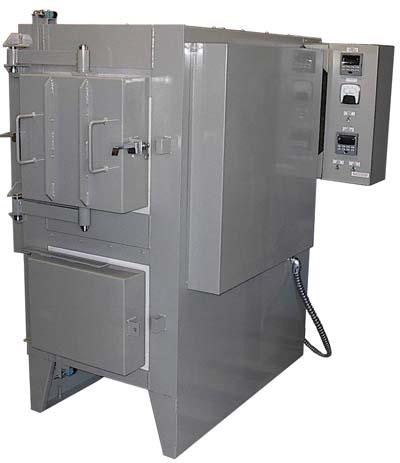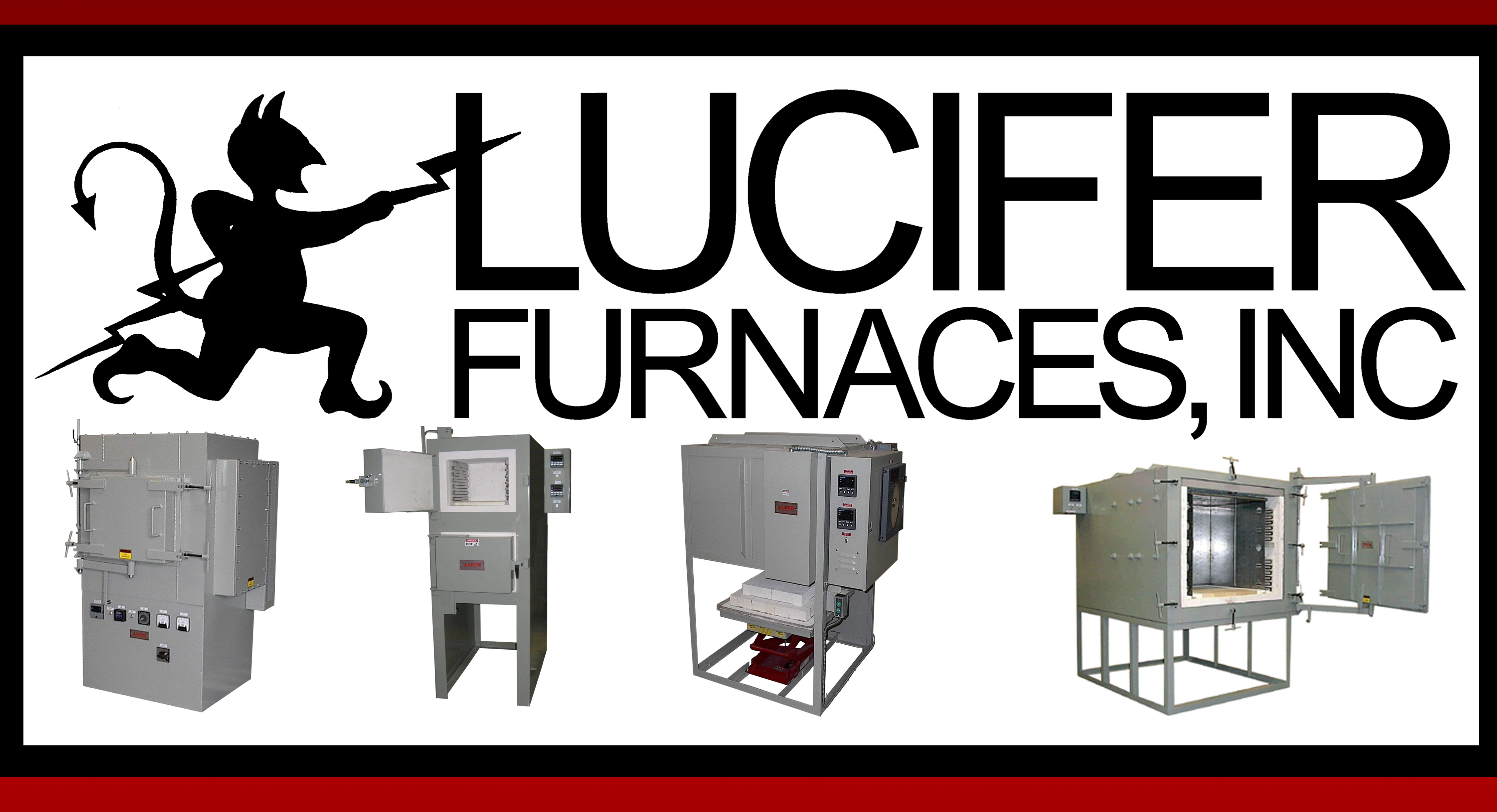
Amarillo College, in the Texas panhandle, has installed a Lucifer Furnaces Model HS84 Dual Chamber Furnace in their Manufacturing Technologies Department. The furnace has two 12"H x 12"W x 24"L chambers mounted in a space saving arrangement. The upper hardening chamber heats to 2450°F while the lower tempering chamber reaches 1400°F. With a heavy gauge sheet steel reinforced shell and numerous safety features this rugged unit is well suited for the needs of an educational facility.
The upper chamber is insulated with 6 ½ inches of dry fit lightweight ceramic fiber and mineral wool block for energy efficiency and heated with silicon carbide elements mounted across the roof and below the hearth. An SCR power supply provides a steady low amperage and voltage supply to the elements for longer life. A double pivot horizontal swing door keeps the hot face away from the user at all times. The lower chamber is lined with insulating firebrick, mineral wool backup, and a stainless steel liner, and heated with coiled heating elements in easy-to-replace holders mounted along the side walls. A high volume rear mounted fan recirculates heat for uniform temperature. A Honeywell digital time proportioning temperature controller is mounted in a separate cabinet on the side.
Professor Kim Hays, Chair of the Manufacturing Technologies Department, chose the furnace as part of the school's program to teach the principals of heat treating of metals and describes the furnace as "ideal" for the school's needs. Specifically he notes that this unit met his requirements both in terms of space and budget.
Contact Details
Related Glossary Terms
- hardening
hardening
Process of increasing the surface hardness of a part. It is accomplished by heating a piece of steel to a temperature within or above its critical range and then cooling (or quenching) it rapidly. In any heat-treatment operation, the rate of heating is important. Heat flows from the exterior to the interior of steel at a definite rate. If the steel is heated too quickly, the outside becomes hotter than the inside and the desired uniform structure cannot be obtained. If a piece is irregular in shape, a slow heating rate is essential to prevent warping and cracking. The heavier the section, the longer the heating time must be to achieve uniform results. Even after the correct temperature has been reached, the piece should be held at the temperature for a sufficient period of time to permit its thickest section to attain a uniform temperature. See workhardening.
- tempering
tempering
1. In heat-treatment, reheating hardened steel or hardened cast iron to a given temperature below the eutectoid temperature to decrease hardness and increase toughness. The process also is sometimes applied to normalized steel. 2. In nonferrous alloys and in some ferrous alloys (steels that cannot be hardened by heat-treatment), the hardness and strength produced by mechanical or thermal treatment, or both, and characterized by a certain structure, mechanical properties or reduction in area during cold working.

